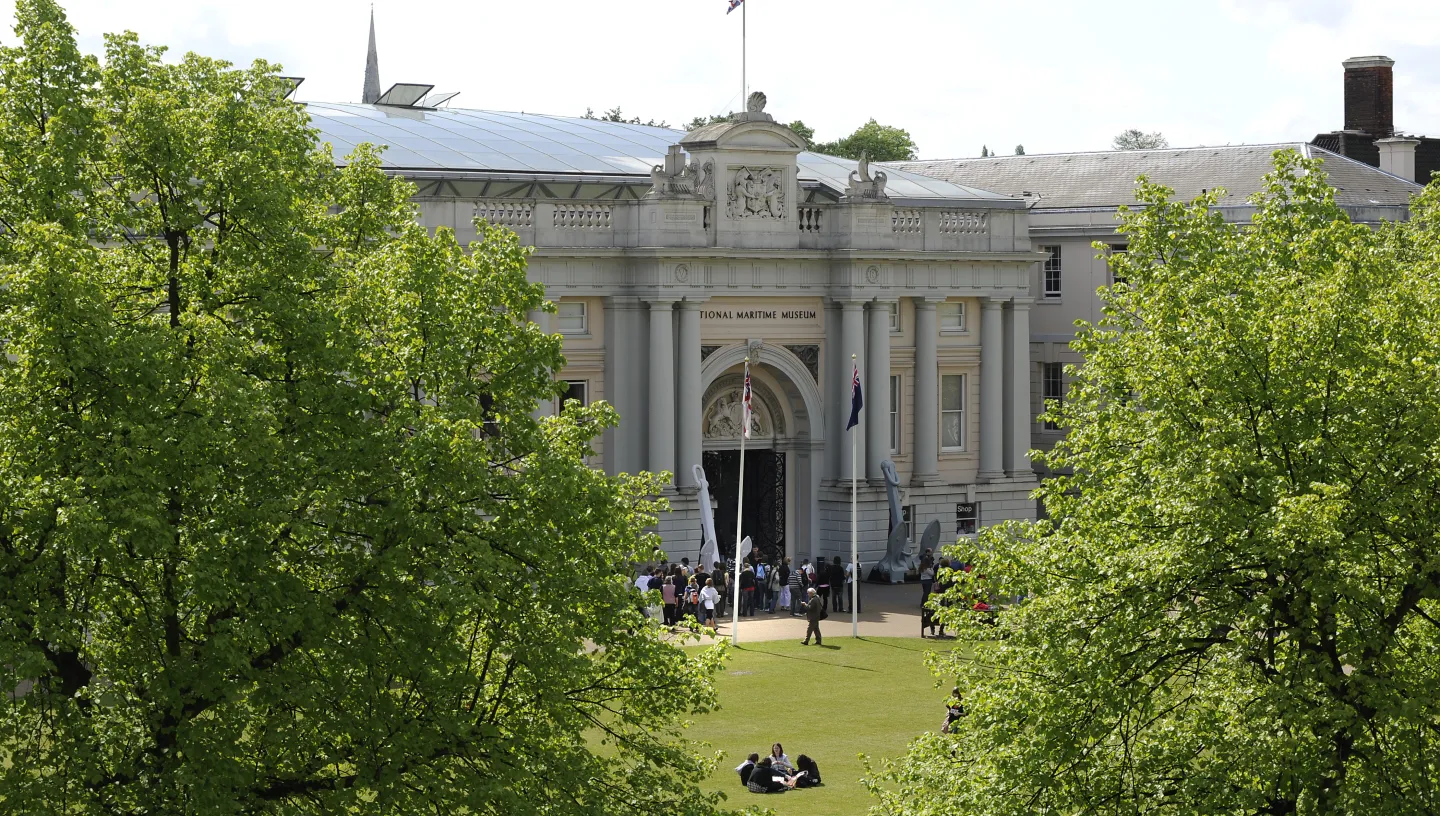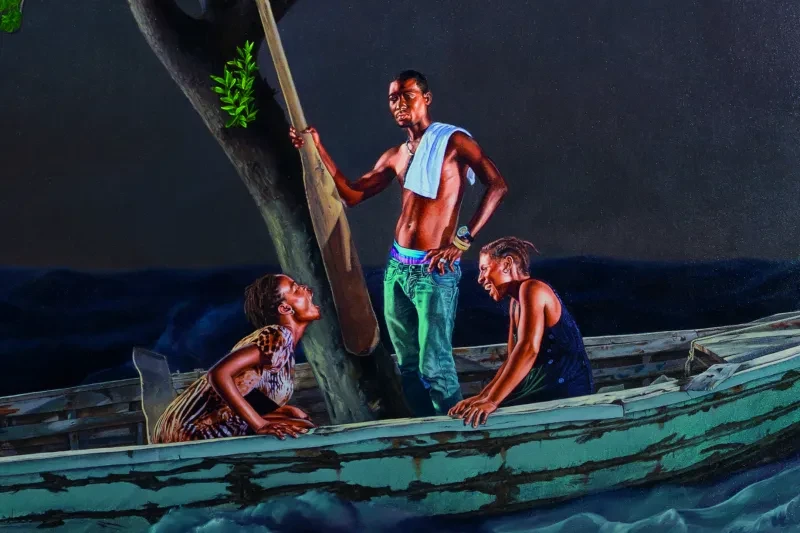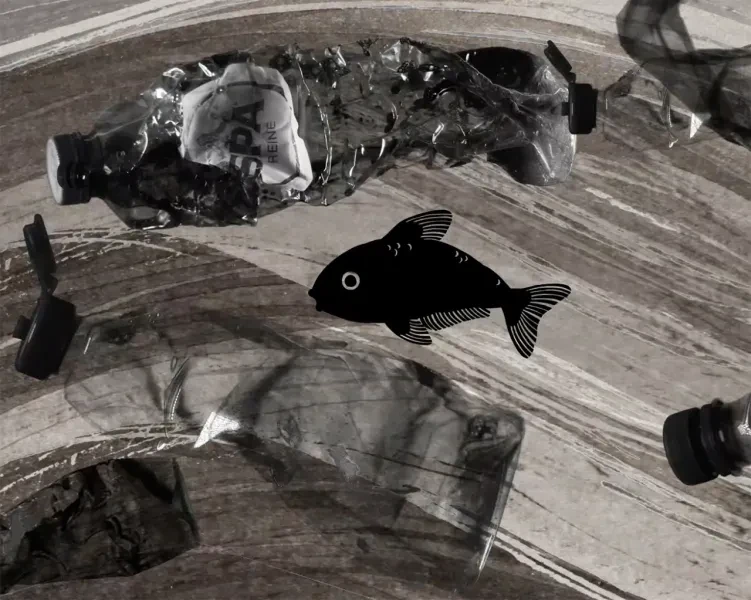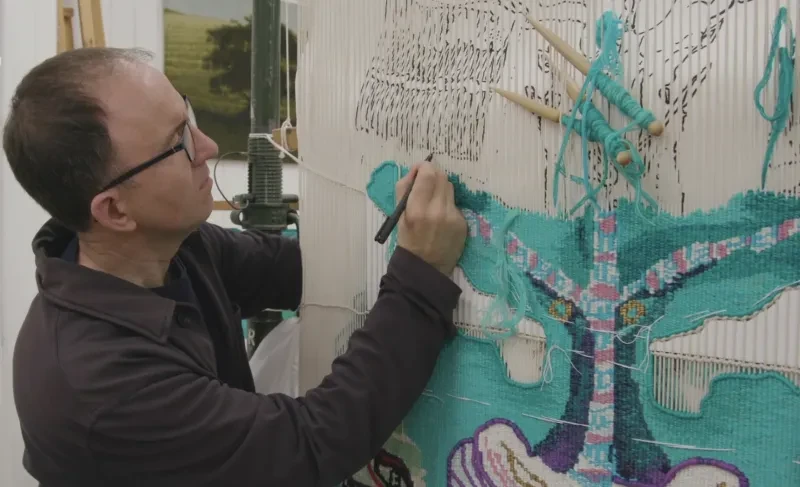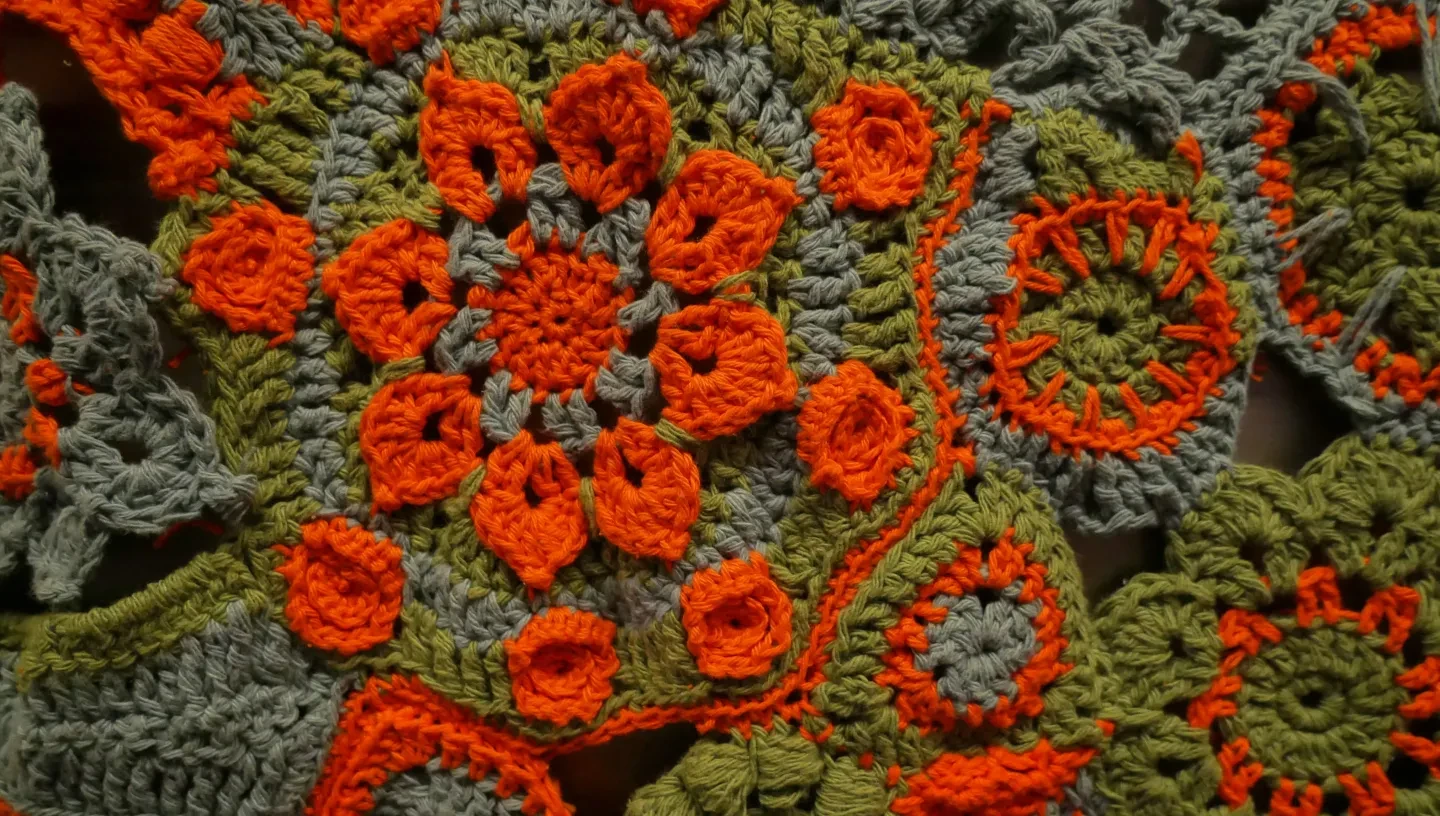
Sarah Hawke is not sure when she first started to crochet, but knew she was immediately hooked.
A Tanzanian and south London-based artist, Sarah explores societal and environmental issues through her art, from Black British identity to microplastics.
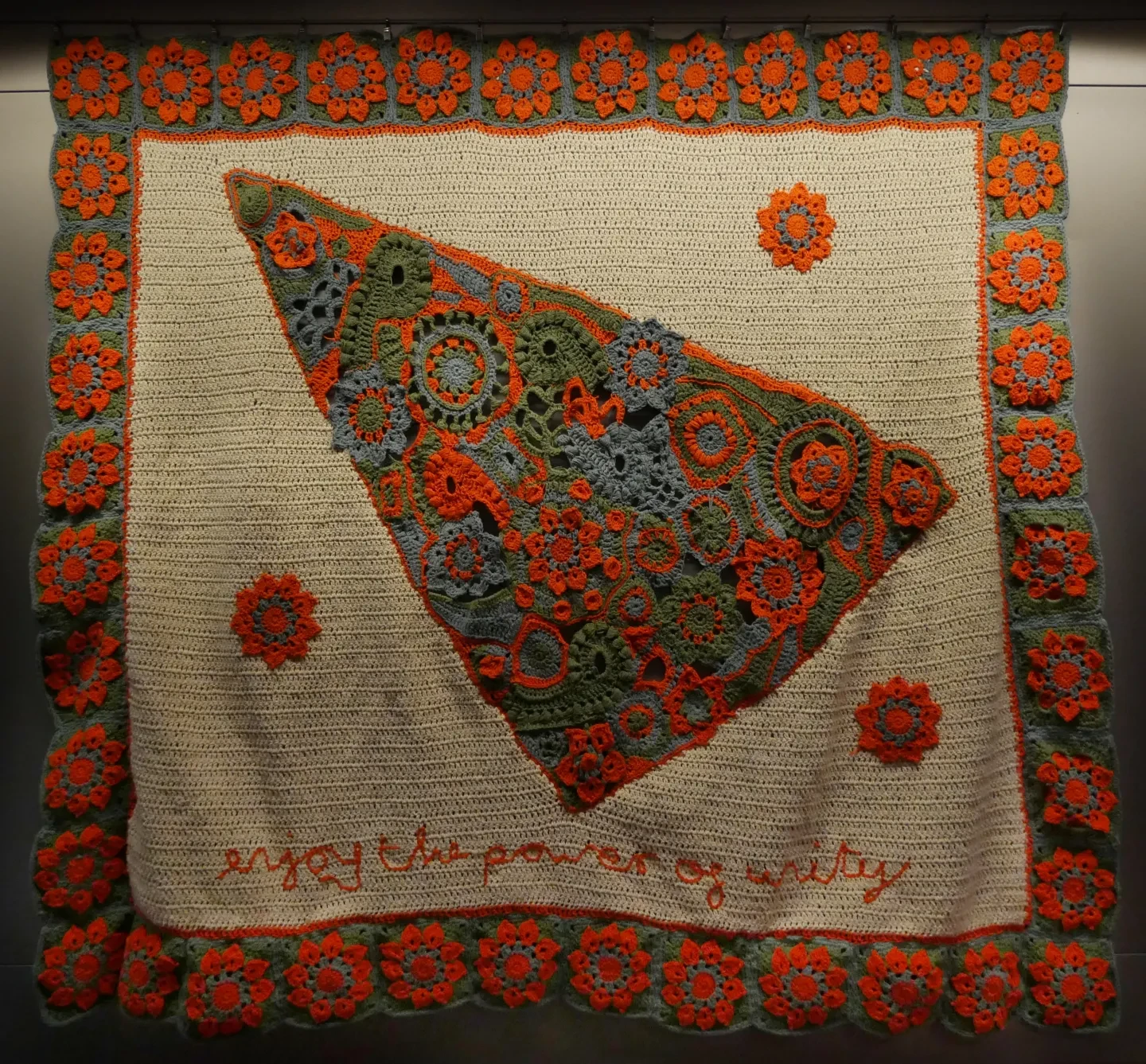
Her latest work enjoy the power of unity is a new commission by the National Maritime Museum.
Drawing on ideas of colonialism, revolution and connections, the piece is a crochet kanga – a decorated length of cotton, traditionally worn by East African women. It is on display in Traders: the East India Company and Asia, a gallery that explores Britain’s maritime trade with Asia.
From inspiration to the creative process, Sarah discusses the story behind her artwork.
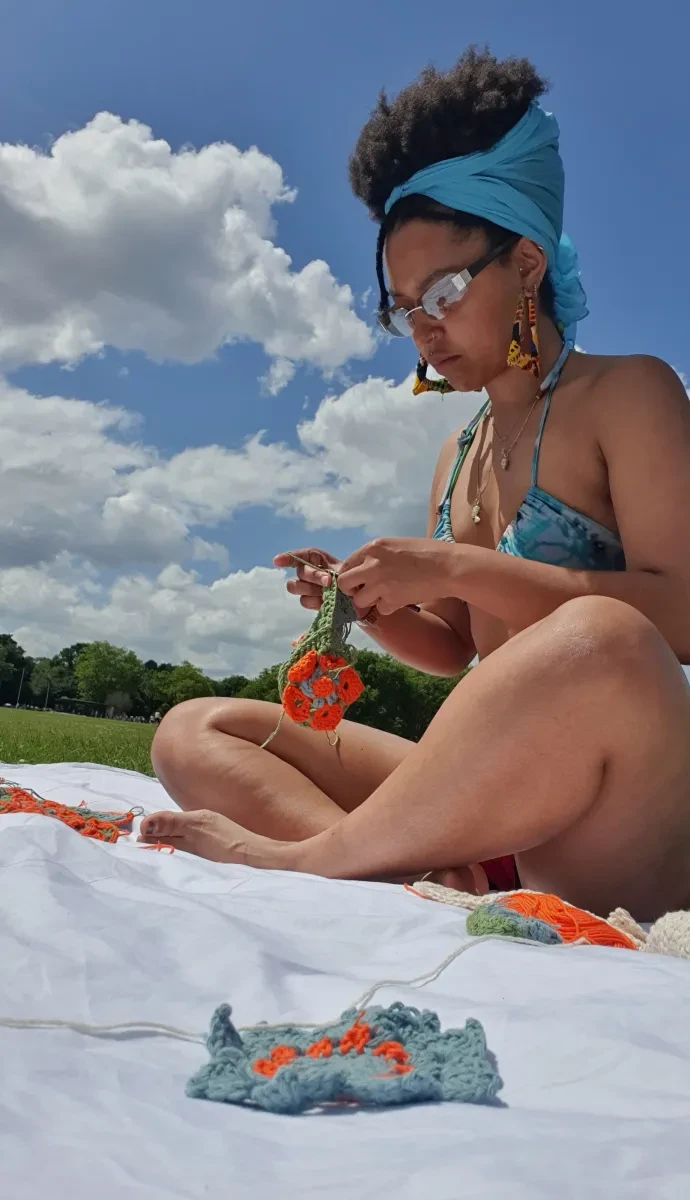
Where did the idea for the work come from?
I love talking about art, identity, expression and the politics of how these ideas intersect. My piece is a response to the gallery, Traders: the East India Company and Asia at the National Maritime Museum.
When I walked through the space, I felt a lot of the emphasis was on Britain’s relationship with the East India Company and its legacy. However, it was less about celebrating countries that had gained independence from colonial powers.
In enjoy the power of unity, I wanted to explore the connection between the Black British Power movements in Brixton in the 1960s and 70s and the independence campaigns of India and Tanzania: places that are knotted together by their revolutions and twisted in Britain’s legacy of colonial oppression.
There was a personal reason too: my mum is from Tanzania, a country that only achieved independence from Britain in 1961 – just over a decade after India gained independence in 1947.
I wanted to celebrate the people who had inspired each other to become independent and highlight the massive cultural shifts that occurred.
What is a kanga, and why did you choose to create one?
For this piece, I was massively inspired by artist Lubaina Himid’s painted kangas, which were on display in Tate Britain’s exhibition Life Between Islands: Caribbean-British Art 1950s–Now.
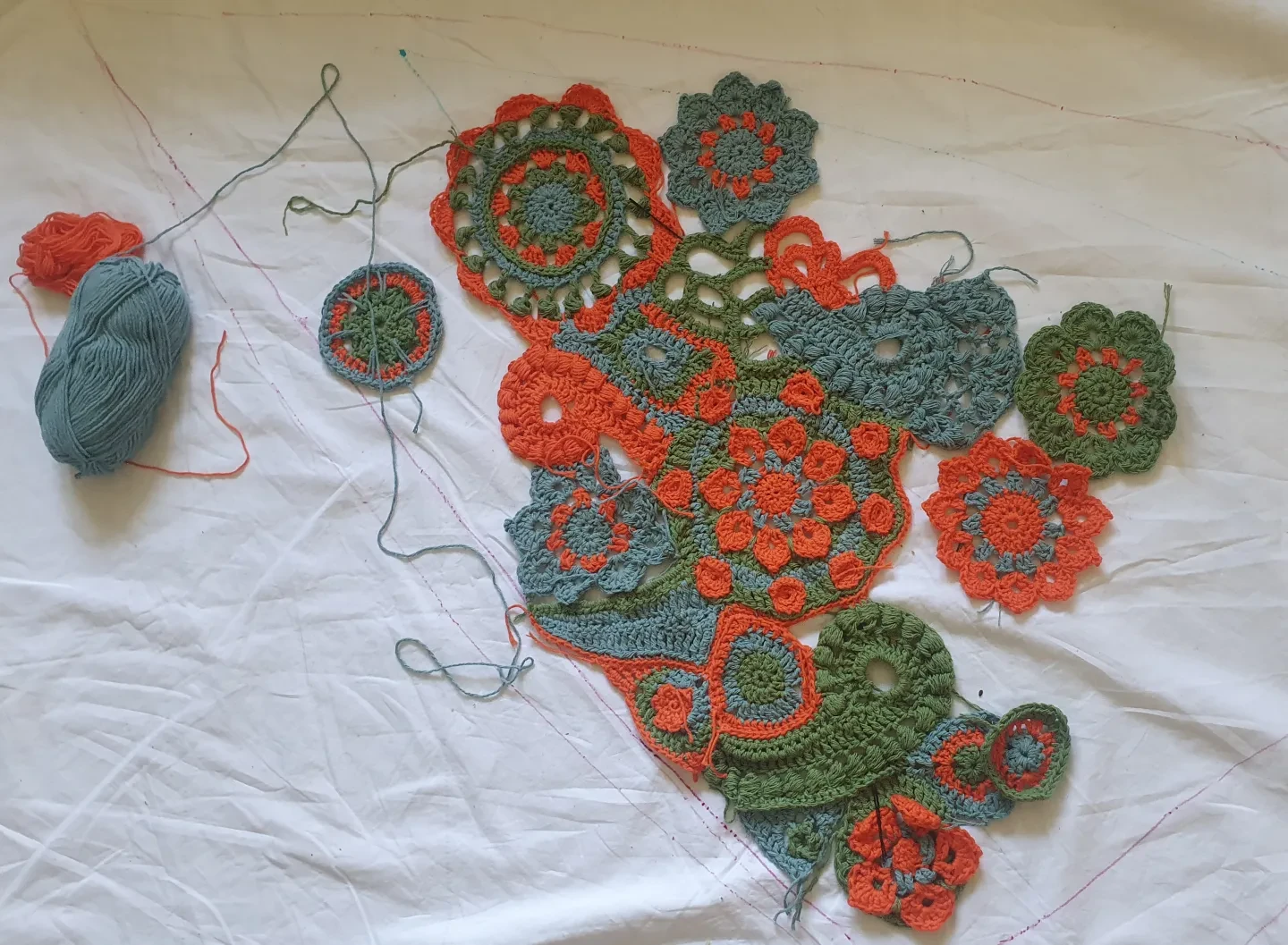
A kanga is a cloth traditionally worn by East African women, which conveys a message. It’s made up of a border and a central design containing a msemo – a Swahili proverb that can be used to spread joy or give affirmations.
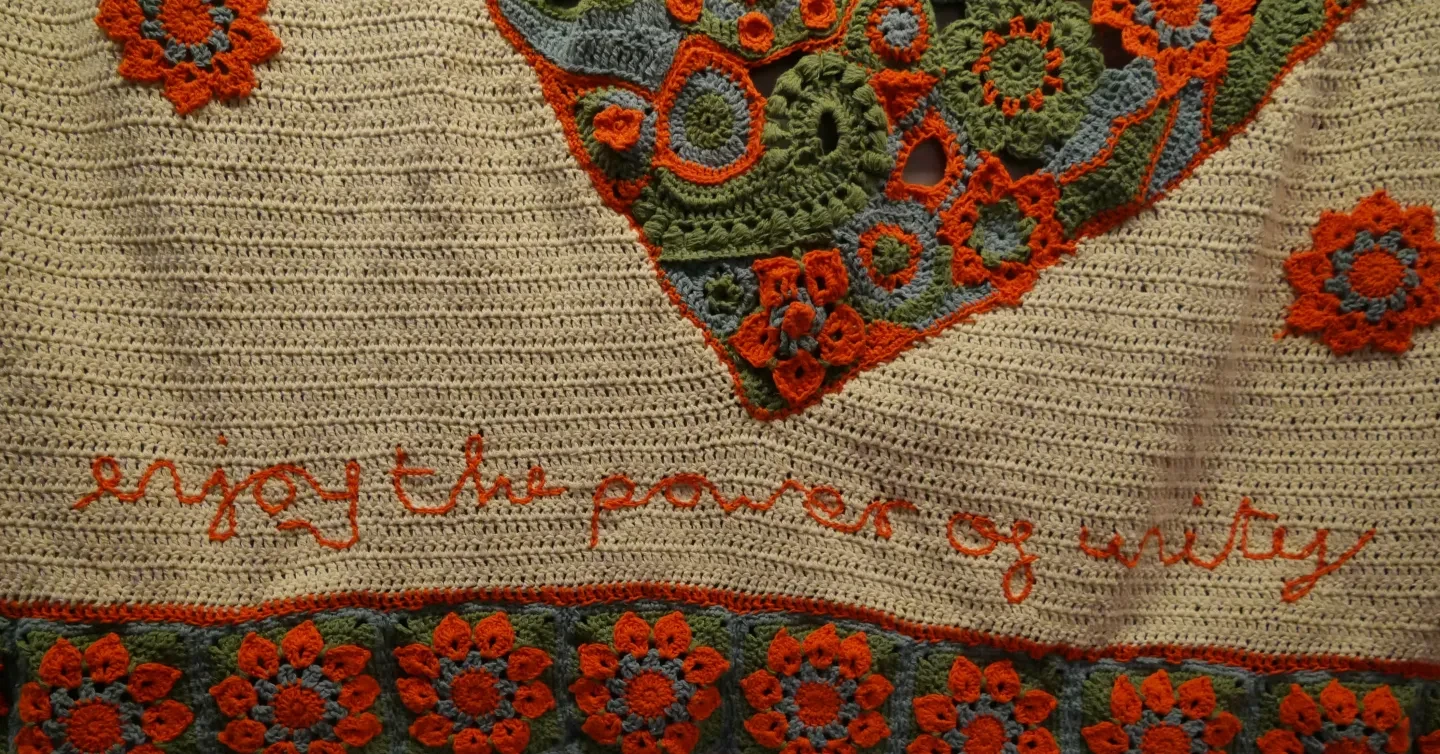
When I was thinking about the commission for the National Maritime Museum, I came across a statement from the academic and sculptor El Anatsui, who said: “Cloth is to the African what monuments are to Westerners” – echoing artist Sonya Clark.
This was a lightbulb moment for me. While Western societies construct massive statues to make a point, different places in Africa use various cloths to spread their messages: these fabrics are personal and highlight what we hold dear to ourselves.
I like the idea that a kanga is a way of communicating that’s not a text message or words written on a canvas.
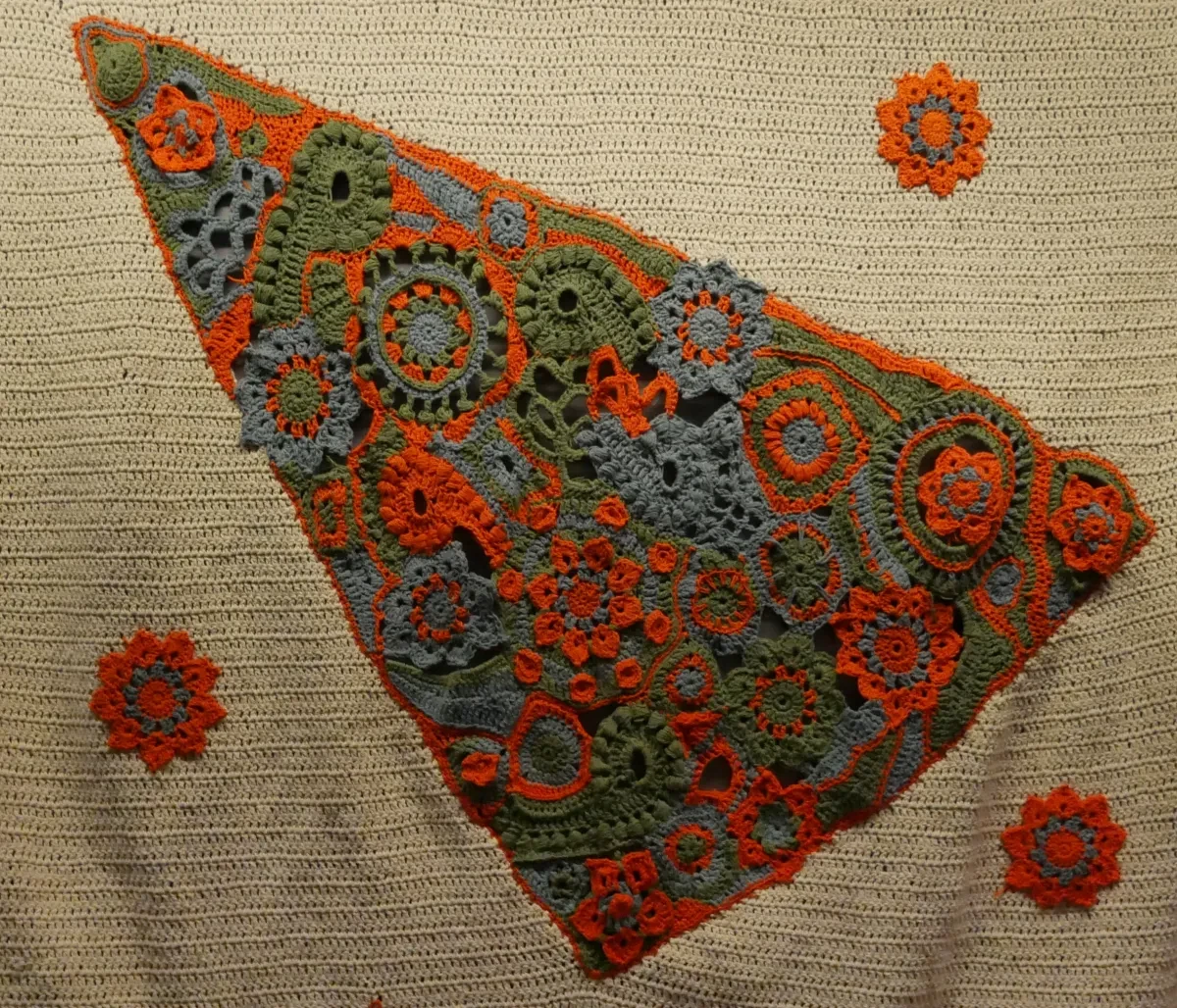
Why did you use crochet?
I knew the piece had to be a well-formed, intricate structure that was floral and bright.
I decided to use freeform crochet to create a sense of fluid movement in the piece: representing the intertwining of people, cultures and ideas, while also celebrating power, unity and independence.
The central design is a triangle, with the top left-hand corner saluting Brixton, the top right-hand corner celebrating India, and the bottom corner representing Tanzania. When creating the design for the piece, I wanted to choose colours that were indicative of Brixton, India and Tanzania.
The colours include blue, the colour of the Victoria underground line (which terminates at Brixton) and also used in the Tanzanian flag. I also used green, as seen in the Tanzanian and Indian flags, and orange – again, a nod to the Indian flag.
enjoy the power of unity is around two metres in height and two metres in length, and took three weeks to bring together. I used to take myself off to my local park, spread out my big duvet and start crocheting: letting the earth hold me up and focusing on being present.
What are the key messages you want people to take away from seeing your work?
The key message is the proverb written on my kanga, which is the work’s title: ‘enjoy the power of unity’. When people look at my work, I want them to identify with this idea in some way and use it as a galvanising moment to encourage them not to put up with rubbish.
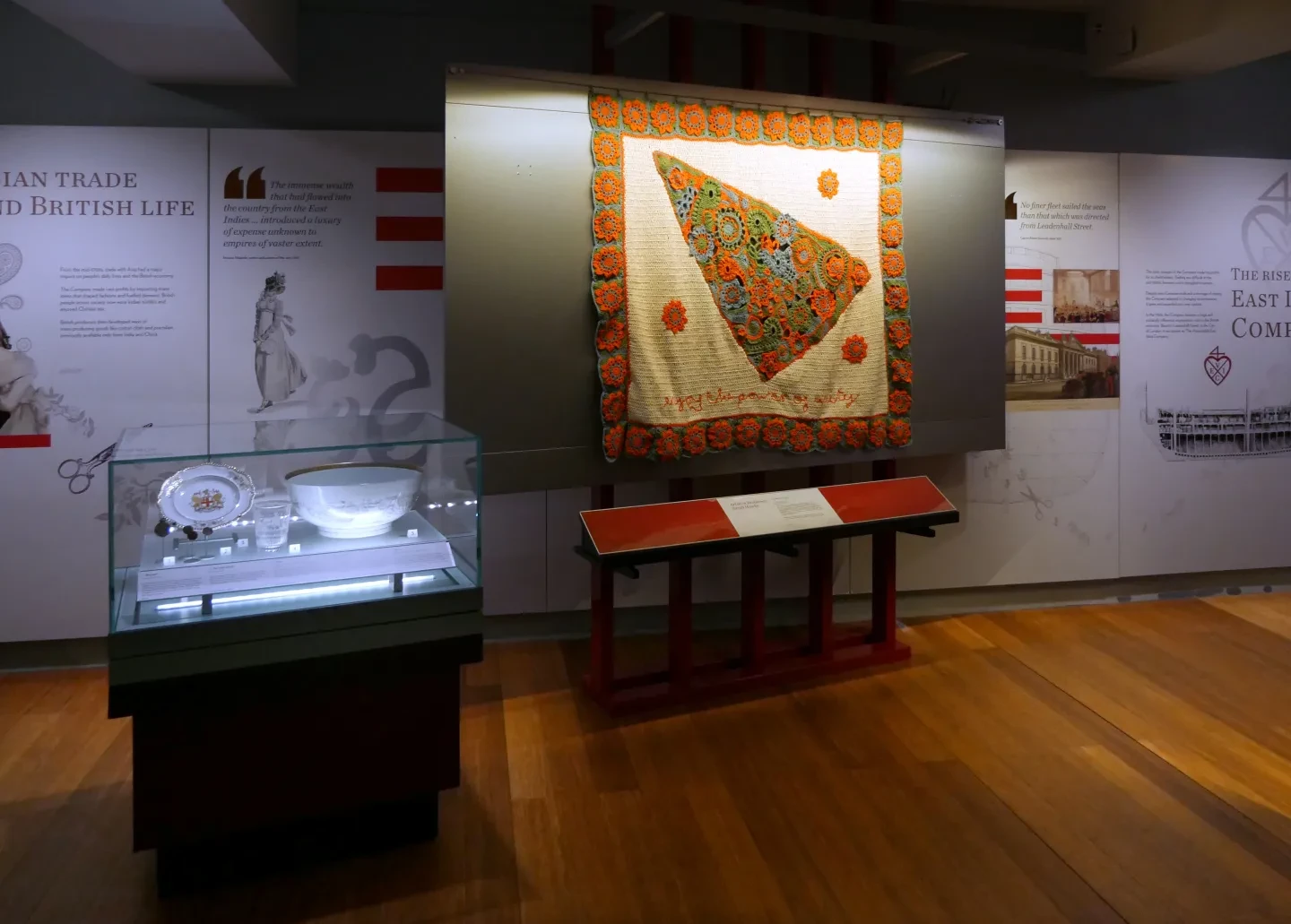
The National Maritime Museum is a really interesting museum to work with; I don’t know another museum like it. It attracts such a diverse audience, from older generations to kids. I hope that my work can appeal to all sorts of visitors, but especially people who look like me and come from a similar background.
I want people to take the work’s message of unity and realise that, by working together, finding your community, engaging with people and politics and things that affect your community, you can change it for the better.
See more of Sarah Hawke’s work on Instagram @sarabi_ldn
